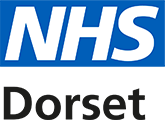Diabetes is a condition that causes a person’s blood sugar level to become too high.
There are two main types of diabetes, type 1 and type 2. Type 2 diabetes is far more common than type 1. In the UK, over 90% of all adults with diabetes have type 2.
High blood sugar that develops during pregnancy is known as gestational diabetes. It usually goes away after giving birth.

Other types of diabetes
In addition to type 1, type 2 and gestational diabetes there are a range of other types of diabetes.
About 2% of people have these other types of diabetes. These include different types of monogenic diabetes, cystic fibrosis-related diabetes, and diabetes caused by rare syndromes. Certain medications such as steroids and antipsychotics could lead to other types of diabetes, as well as surgery or hormonal imbalances. Unfortunately, many of these people are misdiagnosed leading to delays in getting the right treatment.
The Diabetes UK website has more information about all types of diabetes.

